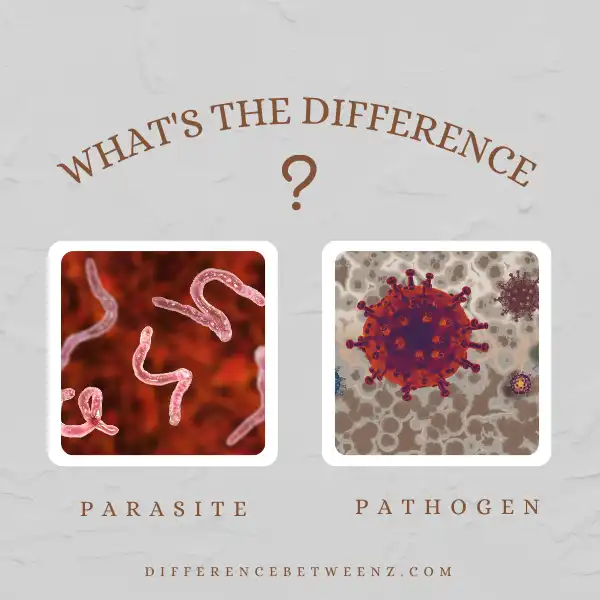The words parasite and pathogen are often used interchangeably, but they actually have different meanings. A parasite is an organism that lives in or on another organism and benefits from its host. A pathogen is a virus, bacteria, or other microorganisms that can cause disease in humans, animals, or plants. In this blog post, we will explore the differences between parasites and pathogens in more detail.
What is Parasite?
- A parasite is an organism that lives on or within another organism (its host) and gets its food from or at the expense of its host. Parasites can cause disease in humans. Some parasitic diseases are easily treated and some are not. Parasites range in size from invisible to large enough to be seen with the naked eye.
- There are three main types of parasites that live on or in humans: protozoa, helminths, and ectoparasites. Protozoa are single-celled organisms that can live inside your cells. Helminths are multi-cellular organisms that often live in your intestines. Ectoparasites are small organisms that live on the surface of your skin and include insects such as lice and fleas.
- Parasites can enter the human body through contaminated food or water, by direct contact with an infected person, or through contact with contaminated soil or animal feces. Some parasites travel through the air (such as Cryptosporidium), while others may penetrate your skin (such as hookworms). Most parasites cause mild to moderate symptoms, however, some parasites can be life-threatening (such as malaria). Treatment for parasitic infections varies depending on the type of parasite involved.
What is Pathogen?
A pathogen is any agent that causes disease. Pathogens can be viruses, bacteria, fungi, or parasites. They are usually spread through contact with contaminated objects or fluids, although some can be airborne. In some cases, a pathogen may enter the body through a break in the skin or by being inhaled. Once inside the body, a pathogen may multiply and cause an infection.
Symptoms of infection vary depending on the type of pathogen involved but can include fever, coughing, and diarrhea. If left untreated, an infection can lead to serious health complications and even death. Pathogens are a major public health concern, and efforts to control their spread are essential to protecting people from disease. Proper handwashing, vaccines, and prompt treatment of infections are all important measures for preventing the spread of pathogens.
Difference between Parasite and Pathogen
There are many different types of organisms that can cause disease in humans, but not all of them are considered parasites or pathogens.
- A parasite is an organism that lives on or inside another organism (its host) and causes harm to the host. A pathogen, on the other hand, is an agent that can cause disease. Although both parasites and pathogens can cause harm to their hosts, there are some key differences between the two.
- For one, parasites typically have a much longer lifespan than pathogens. This is because they rely on their hosts for food and shelter, and often cause slow, gradual damage to the host over time. Pathogens, on the other hand, only live for a short time inside their hosts and typically cause more sudden and severe damage.
- Additionally, parasites are usually much smaller than pathogens and can only reproduce inside their hosts. Pathogens, on the other hand, are typically larger than parasites and can reproduce outside of their hosts.
Finally, many parasites are not harmful to their hosts unless the host is immunocompromised, while most pathogens are harmful to everyone regardless of their immune status.
Conclusion
The difference between a parasite and a pathogen is an important distinction to make, as it can have serious implications for public health. While parasites are often benign or even helpful, pathogens can cause serious illness and death in humans and other animals. It’s important to be able to distinguish between the two so that we can take steps to protect ourselves from harmful infections.


